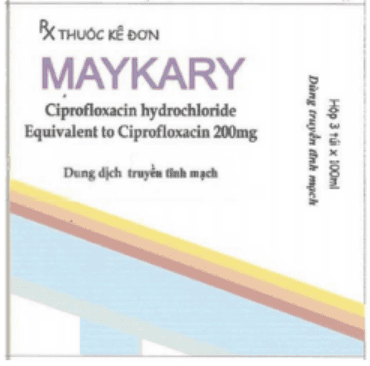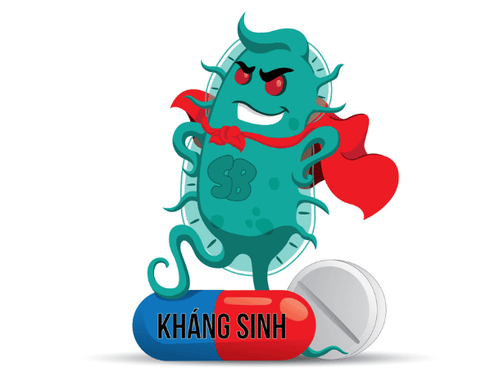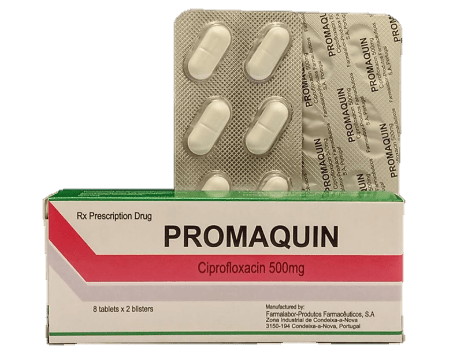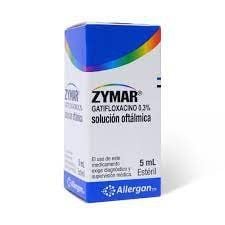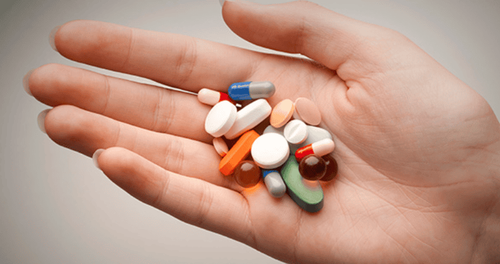This is an automatically translated article.
Cipthasone drug has the main ingredient is Ciprofloxacin 15 mg, belongs to the group of Quinolone antibiotics. Cipthasone is mainly used to treat bacterial infections of the eyes and ears. Learning basic information such as Cipthasone ingredients, uses, dosages and side effects will help patients and their loved ones get the best treatment results.
1. What is Cipthasone?
Cipthasone is prepared in the form of a 5ml solution, with the main ingredients including:
Active ingredients: Ciprofloxacin 15 mg. Excipients: Acetic acid, Sodium edetat, Sodium acetate, Methylparaben, distilled water just enough for 1 bottle of 5 ml. Pharmacodynamics
Ciprofloxacin is a semi-synthetic antibiotic of the Quinolone group. The main mechanism of action of Ciprofloxacin is to inhibit the enzyme DNA Gyrase, which prevents the replication of Chromosomes, making bacteria unable to reproduce.
Ciprofloxacin is one of the strongest antibiotics in the Quinolone group, with good effects on bacteria resistant to Aminoglycoside antibiotics, Cephalosporin, Tetracycline or Penicillin ... and Ciprofloxacin also has a fairly broad antibacterial spectrum including:
Gram-negative bacteria including Pseudomonas and Enterobacter. Gram-positive bacteria such as Staphylococcus, Enterococcus, Streptococcus, Listeria monocytogenes... Ciprofloxacin is more sensitive to Gram-negative bacteria than Gram-positive. However, Ciprofloxacin is less sensitive to most anaerobic bacteria.
2. What does Cipthasone do?
The use of Cipthasone is indicated for the treatment of the following cases:Infections of the eye such as: keratitis, eye conjunctivitis, corneal ulcer, eyelid inflammation, lacrimal sac, blepharitis, inflammation of the eyelids. level Meibomius gland. Ear infections such as otitis externa, otitis media, chronic purulent otitis media. Prevention of infection before and after surgery in the ear or eye.
3. Contraindications of Cipthasone
Contraindications of Cipthasone in the following cases:
Patients with hypersensitivity to any component of Cipthasone. History of allergy to other medicines containing Ciprofloxacin. History of allergy to other quinolone antibiotics. Pregnant or lactating women.
4. Dosage and how to use Cipthasone
Depending on the disease, the doctor may prescribe the way to use and the dose for different patients:
Corneal ulceration
The first day: Instill 2 drops/time every 15 minutes for the first 6 hours. Apply 2 drops / time / 30 minutes for the rest of the time. Second day: Instill 2 drops/time every 1 hour. Day three to fourteen: Instill 2 drops every 4 hours. Infectious conjunctivitis
First two days: Instill 1-2 drops every 2 hours. The next five days: Instill 1-3 drops every 4 hours. Ear infections
Dosage: Instill 1-2 drops/time x 2 times/day, treat for at least 7 days.
5. Precautions when using Cipthasone
5.1. Side effects encountered when using Cipthasone Treatment with Cipthasone in high doses or for a long time can cause side effects such as:
Uncommon: Neurological symptoms such as headache, dizziness, dizziness, lightheadedness, tinnitus, hearing disturbances, taste and smell disturbances. Other symptoms include fever, tachycardia, erythema, pruritus, elevation of serum creatinine, bilirubin and alkaline phosphatase, superficial phlebitis, joint pain and swelling. Rare: Skin-mucosal syndrome, Lyell's syndrome, vasculitis, erythema multiforme, erythema nodosum, musculoskeletal pain, tendonitis of the heel and surrounding tissues, acute renal failure, interstitial nephritis , hepatitis, cholestatic jaundice. Patients should stop taking Cipthasone when detecting the above symptoms or any other abnormalities after taking the drug. In addition, patients and family members should promptly notify the treating doctor or immediately go to the nearest medical examination and treatment facility for timely treatment.
5.2. Note the use of Cipthasone in the subjects Note the use of Cipthasone in the following cases:
Caution when using Cipthasone in people with a history of epilepsy or central nervous system disorders, people lacking Glucose 6 Phosphate Dehydrogenase (G6PD), people with severely impaired liver and kidney function, people with myasthenia gravis. Routine antibiogram to change treatment in case of overgrowth of bacteria not sensitive to Cipthasone. Limit the use of Cipthasone in young children or children who are growing, because the active ingredient Ciprofloxacin can cause cartilage degeneration in weight-bearing joints. Pregnant women: According to the classification of the US Food and Drug Administration (FDA), the active ingredient Ciprofloxacin in Cipthasone belongs to group C, the group with evidence of harm to pregnant women. Although, Cipthasone is a drug for topical use, the use of Cipthasone in this subject needs to be weighed between the benefits and possible harms to the fetus. Breastfeeding: Studies have shown that the active ingredient Ciprofloxacin in Cipthasone can accumulate and pass through breast milk to harm the baby, it is not recommended to use Cipthasone in nursing women. Drivers or machine operators may experience symptoms such as headache, dizziness, and visual disturbances after using Cipthasone. Therefore, do not use Cipthasone before or during work.
6. Cipthasone drug interactions
Interaction with other drugs
Drugs that reduce absorption of Cipthasone when used concurrently, that is: Cyclophosphamide, Cytosine arabinoside, Mitozantron, Doxorubicin, Vincristine Non-Steroidal Anti-Inflammatory Drugs (NSAIDs) increase the side effects of Cipthasone. The combination of Cipthasone and Theophylline increases Theophylline concentration, thereby increasing the incidence of Theophylline side effects. Co-administration of Cipthasone and Probenecid reduces glomerular filtration rate, renal tubular secretion, thereby reducing drug excretion. Co-administration of Cipthasone and Ciclosporin may increase blood creatinine. Concomitant use of Cipthasone and Warfarin can lower prothrombin in the blood. Above is the basic information about the composition, uses, dosage and notes when using Cipthasone. To bring the best treatment effect for themselves and their family, users should carefully read the instructions for use of Cipthasone, and strictly follow the instructions of the doctor or pharmacist.
Follow Vinmec International General Hospital website to get more health, nutrition and beauty information to protect the health of yourself and your loved ones in your family.
Please dial HOTLINE for more information or register for an appointment HERE. Download MyVinmec app to make appointments faster and to manage your bookings easily.




